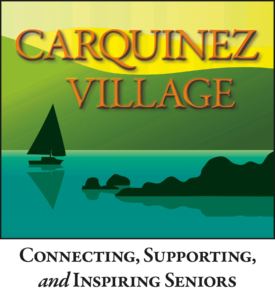By Judie Donaldson
How many times, if ever, have you made a significant change in your life? Have you gotten rid of a seriously bad habit? Have you transformed your attitude toward someone from negative to positive? Have you eliminated a bias? When I was young, I thought that you could just decide to change––and voila!––you could do it. Now that I’m older and wiser, I understand that change is more akin to moving a mountain.
This is on my mind because I learned this week that eight leading national organizations on aging, including AARP and the American Society on Aging, have determined that, “America needs an aging attitude adjustment!” An aging attitude adjustment? That’s a new concept for me. What came to your mind when you read this? I imagine that, like me, you assumed that it meant that the current attitude is inadequate and needs to be changed. And we’re right.
These eight organizations partnered to conduct research on individuals’ attitudes toward older people . . . and the research results aren’t pleasant. They validated that our societal attitude toward older adults is rooted in unhealthy and demeaning attitudes of ageism and marginalization. The research showed that aging is misunderstood, and, moreover, its misperceptions and stereotypes lead to discrimination against older people in many areas of life from health care to the workplace. In addition, importantly, the research concluded that there is a widespread, implicit bias, which means that people––including people like you and me––aren’t even aware of the presence of this negative attitude. It’s just there.
Well, AARP, the American Society on Aging and their colleague organizations want to put an end to this. Their goal is to do nothing less than transform the way the whole public thinks about older adults. Now that’s what Jim Collins, author of From Good to Great, would call a “BHAG,” a “Big Hairy Audacious Goal.” More power to them! I’m sure glad those eight organizations are around.
Something needs to change, that’s for certain. We have begun the biggest demographic change in the history of our country. You’ve probably heard that close to 10,000 people will be turning 65 every day through 2030. Today, one out of three people in our country is over 50. By 2030, one out of five will be over 65. I wonder how Benicia will change and what it will look like then. In general, this bulging population, of which we are a part, brings rich knowledge, talent, and experience, and we’re going to be living healthier and living longer. It’s clearly time to purge the stereotype of all of us as vulnerable and dependent older adults with vapid minds sitting on the sideboard of society!
One of the goals of Carquinez Village is to encourage and stimulate our members, as well as others in the community, to live life as fully as possible during this later stage of life. It occurs to me that the Village is primarily focused on encouraging individual change while the eight organizational partners are working on societal change. Both approaches are critical. This prompted me to wonder whether there is a way to tackle local systemic change, to uproot implicit bias, and transform the attitudes and understanding of aging in Benicia.
Perhaps we’ve already started this process through our actions, through the fact that a group of older adults created Carquinez Village. We didn’t wait for someone to do it for us. We brought a national movement to Benicia. Additionally, just look around at the other nonprofits in town. When you do, you’ll see a whole host of grey-haired volunteers in the lead.
Speaking of actions, here’s something we all can do to forge individual and community change. It’s something that I started to do in this column, something that I didn’t do before. Can you guess what it is? It had to do with my choice of words.
I never used the word “senior.” Instead, I used “older adult.” Let me explain why. The research that the group of eight conducted provided research participants with five terms used to describe older people––older person, older adult, senior, senior citizen, and elder––and asked them to rate them on a five-point scale across a number of competence-related adjectives (e.g. technologically capable, independent, wise, etc.). Their ratings were averaged to create an overall measure of perceived competence.
I was stunned by the results! Older adult was the winner, so to speak, which means that when the term older adult is used, individuals are perceived as more competent than when any other label is employed. Next came, in this order, older person, senior citizen, elder…and guess what came in last. Senior! That means, obviously, that when the term senior is used, people are viewed least competently.
You may not be familiar with the fact that language has powerful impact. Words and labels count. They shape and reflect attitudes. So, I’m making an attitude and behavior adjustment today. No fooling around. No more “senior” label for me. It’s older adult from now on. I’m going to encourage others, including you, to do the same. Tell your friends. We can be a force for change in Benicia.
I am projecting that some of you may be skeptical. I know. I know plenty of people who think that they know more than the data collected from huge research studies. If you are inclined to fall into this camp, I’m pleading with you to take a risk and give these research results a shot. Just think. You can be a part of a community-wide “aging attitude adjustment.” That’s rare. How often can you be a change agent anyway? And who knows? You might have an attitude adjustment yourself.







Leave a Reply